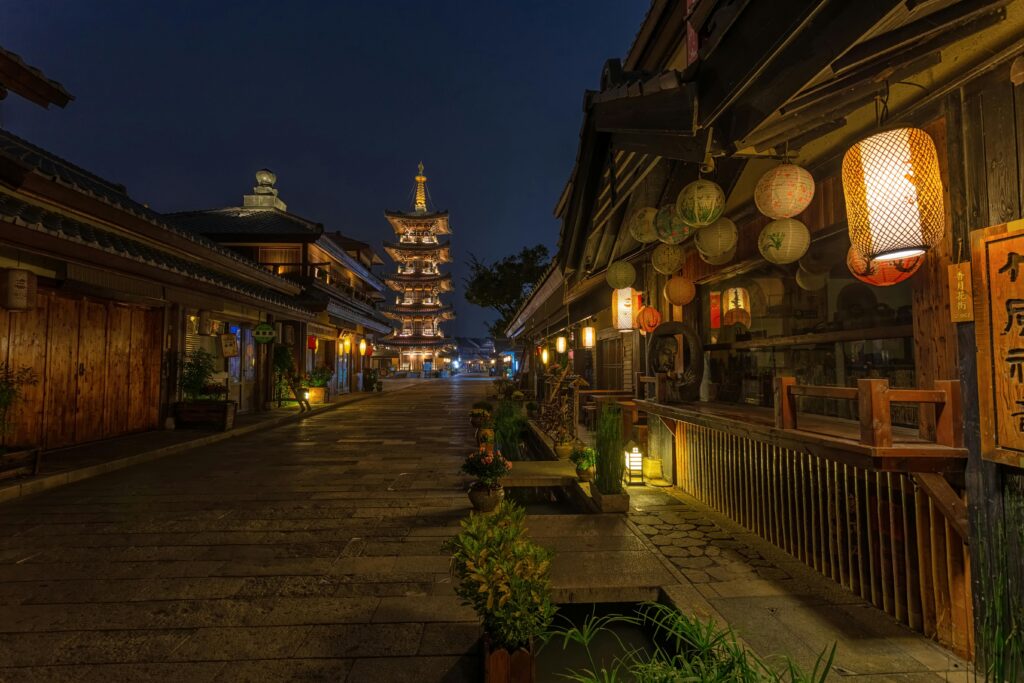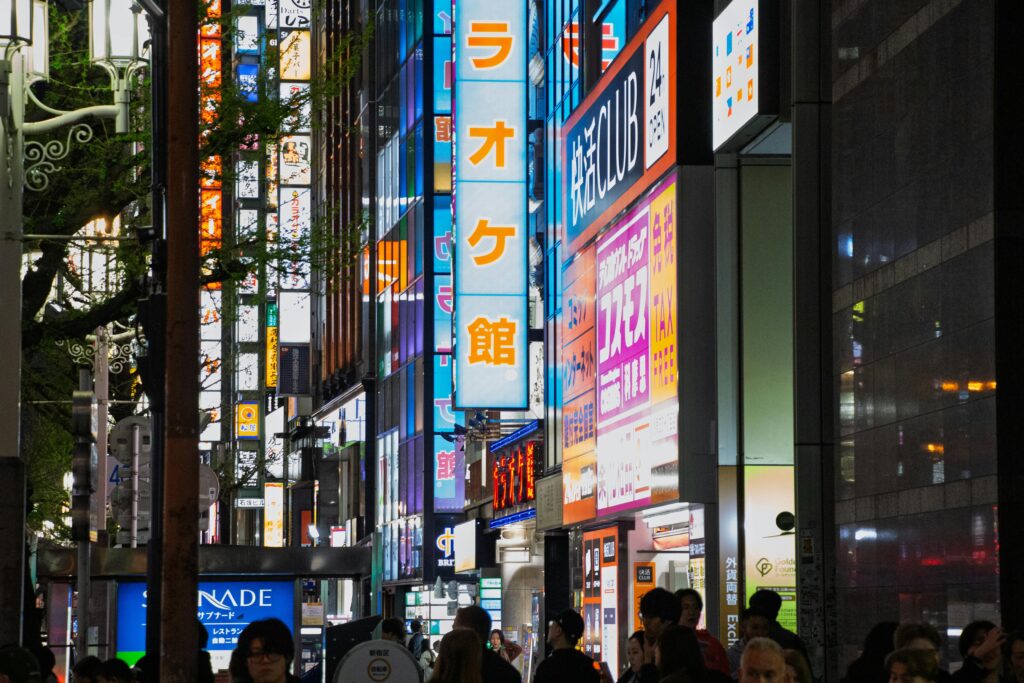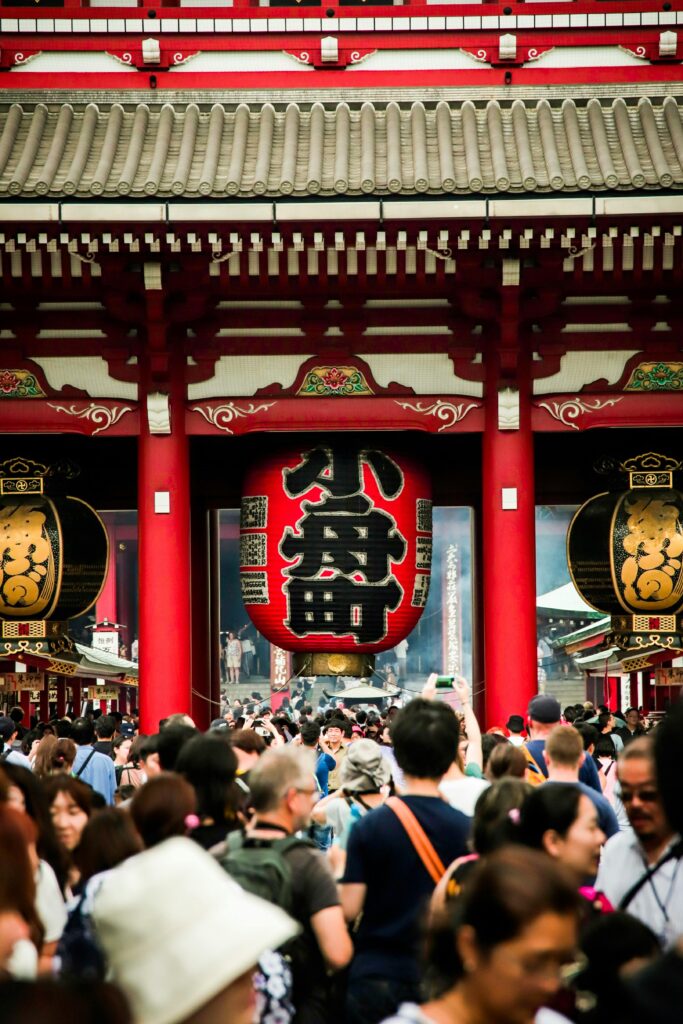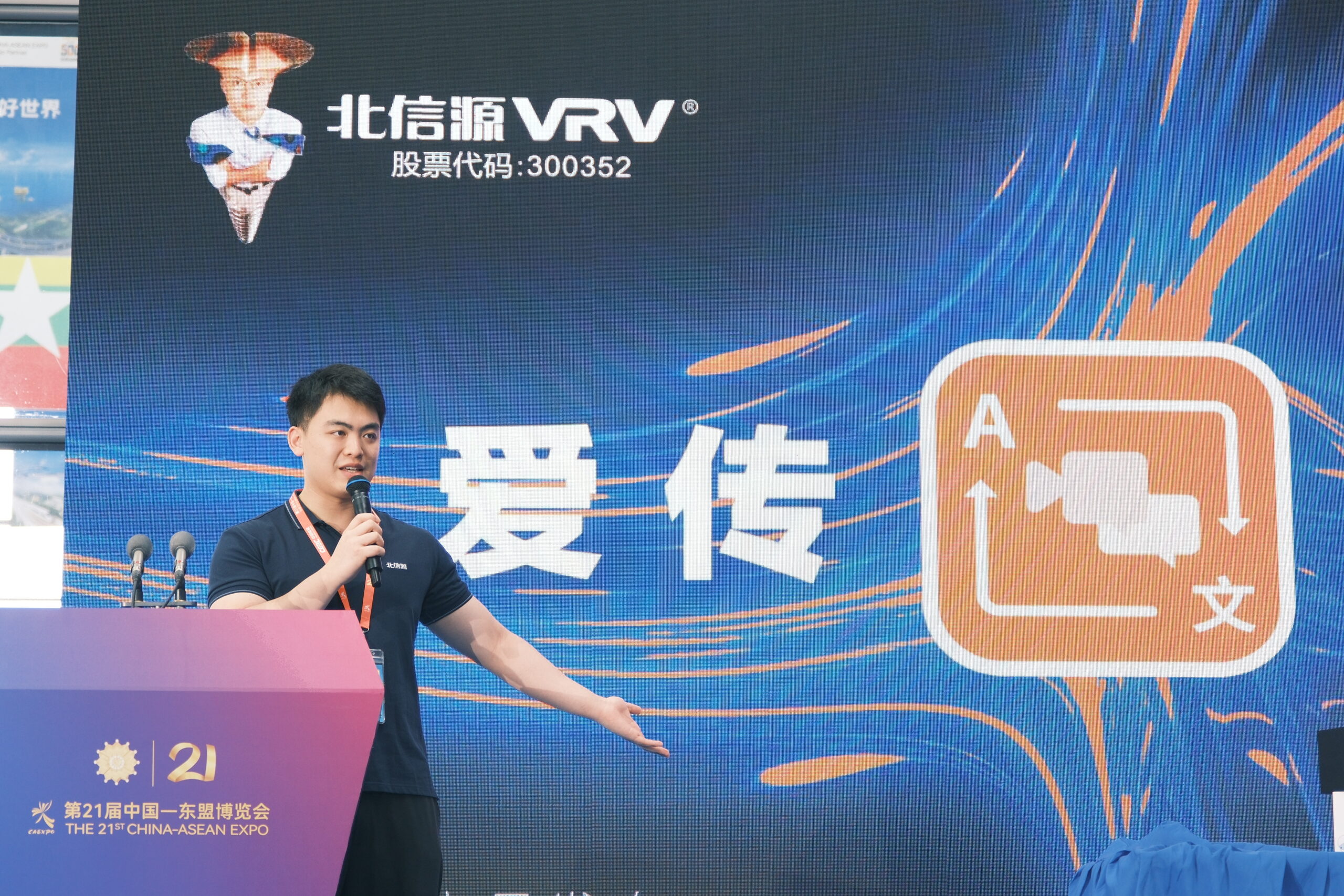After a three-year hiatus due to pandemic restrictions, Chinese travelers are returning to Japan in force—but with tastes, habits, and expectations that have shifted dramatically. Today’s “new style” Chinese tourists—driven by Gen Z and millennials—prioritize immersive experiences, off-the-beaten-path destinations, and seamless digital integration over the old staples of bulk shopping and packaged tours. This article delves into how Chinese travel patterns have evolved, highlights opportunities for Japanese destinations beyond the usual urban hubs, and answers common questions about what to expect when catering to this resurgent market.

1. From Group Tours to Small-Group and Solo Exploration
The Pre-Pandemic Model:
Traditionally, Chinese outbound travelers favored large, coach-based tours—often visiting signal attractions in Tokyo, Osaka, and Kyoto, making quick stops at duty-free shops, and staying in major hotel chains. These 10–12-day itineraries were orchestrated by travel agencies that negotiated group discounts on hotels, transport, and shopping vouchers.
The New Paradigm:
- Micro-Group Tours (5–10 people): Smaller, themed tours (food-focused, nature-centric, anime pilgrimage) offer greater flexibility and authentic interactions. Local guides arrange farmhouse-stay homestays in Nagano, ramen workshops in Fukuoka, or sake tastings in Niigata.
- Independent Travelers: With lower visa barriers reinstated, younger Chinese now prefer crafting bespoke trips: flying into Osaka, renting a car for a self-drive through Shikoku, and staying in ryokan-style guesthouses onsen-side. Home-sharing platforms in rural prefectures report a 120% spike in Chinese bookings from April to May 2025.
Implications for Japan:
Destinations once considered niche—Kanazawa’s traditional teahouse district, the Aso-Kuju volcanic range in Kyushu, and the lacquerware workshops of Wajima—are redesigning signage, installing Chinese-language audio guides, and partnering with influencer networks to create short-videos that highlight these hidden gems.
2. Culinary Adventures Over Shopping Sprees
Beyond Duty-Free:
Chinese tourists once prioritized electronics and cosmetics in Tokyo’s Ginza or Osaka’s Shinsaibashi. Now, food is front and center:
- Michelin Journeys: Chinese “food influencers” share stories of queueing two hours for Neapolitan-style pizza in Miyagi or hunting down the best unagi don (grilled eel) in Shizuoka. Reservations at starred restaurants—like Kikunoi in Kyoto—are in high demand.
- Street-Food Trails: In Kyoto’s Nishiki Market or Osaka’s Dōtonbori district, small bites like takoyaki, taiyaki, and yubeshi wagashi (yuzu-infused sweets) draw food-obsessed Chinese millennials posting on Xiaohongshu (Little Red Book).
- Local Workshops: Cooking classes where families learn to make okonomiyaki in Hiroshima or soba noodles in Nagano are selling out; many operators now offer Chinese-speaking instructors and QR-coded recipe cards.
Strategy for Restaurants:
Adapting menus with Chinese translations, accepting UnionPay and Alipay, and highlighting local-seasonal ingredients (e.g., Shinshu apples, Hokkaido dairy) help establishments stand out. Several ryotei (traditional dinners) have begun offering prix-fixe “omakase” menus tailored for small-group Chinese bookings.
3. Digital-Nomad and Remote-Work Stays
Longer Stays, Work-Leisure Mix:
With China’s labor market normalizing remote-work policies, a segment of digital nomads is relocating to Japanese co-living spaces for weeks at a time—especially in cities with lower living costs than Tokyo:
- Fukuoka and Sapporo: Both have launched “workation” packages—combining coworking spaces with local language classes and guided hikes in Daisetsuzan National Park.
- Okinawa’s Island BnBs: Ocean-view villas marketed to freelance designers from Shanghai now offer high-speed internet, bilingual support services, and weekend diving excursions.
Accommodation Trends:
Platforms like Flatio and Oyo Life (which list intermediate-term rentals) record a 75% jump in Chinese inquiries for one-to-three-month stays in April 2025 compared to 2024. Hostels in Kumamoto and Sendai report that Chinese remote workers favor private “pod café + workspace” combos.
4. Seamless Digital Payments and Mobile Integration
E-Wallet Dominance:
UnionPay, Alipay, and WeChat Pay are the de facto payment methods. Major JR stations, convenience stores, and smaller izakayas now display “欢迎支付宝/微信” stickers. QR-code menus—once rare outside Tokyo—are ubiquitous nationwide by May 2025.
Contactless Transport:
- IC Cards & Apps: Suica, Pasmo, and Icoca cards loaded on the Alipay Hong Kong app enable Chinese travelers to tap through Japanese train gates without exchanging cash. Analytics show a 220% rise in Chinese-linked IC-card recharges in 2025’s first quarter.
- Ride-Hail Integrations: Didi-app partnerships with local taxi associations in Osaka and Yokohama allow direct hailing in Chinese, with fare estimates and bilingual receipts—streamlining last-mile logistics for city-center arrivals.
Opportunities for Merchants:
Small craft shops and rural roadside stalls (michi-no-eki) have adopted portable QR terminals. Regional craft-coop initiatives provide micro-grants to farmers’ markets willing to install Chinese-language POS systems, boosting rural sales by 30%.

5. Cultural Sensitivities and Language Support
Communication Services:
While English proficiency in urban Japan has improved, many Chinese tourists still prefer assistance in Mandarin. Travel agencies and hotel chains are hiring “Mandarin concierges”:
- Local Interpreter Corps: Municipal governments in Kyoto, Nara, and Kanazawa have expanded volunteer “Tourist Support Centers” staffed by Mandarin/English volunteers, offering map-based navigation and real-time translation kiosks.
- AI-Powered Helpers: Several prefectures are trialing AI-translation robots in public restrooms, visitor centers, and train stations—providing spoken and visual assistance in simplified Chinese.
Cultural Norms:
Japanese hostels and family-run inns (minshuku) are training staff on common Chinese customs—explaining bowing versus handshakes, acceptable tipping norms (no tipping culture), and queue etiquette—ensuring smoother interactions.
6. Regulatory and Infrastructure Updates
Visa Relaxations:
As of April 2025, China is fully back on Japan’s visa-exemption list for short trips up to 15 days—eliminating the group-tour-only requirement that applied in 2023–24. eVisa pre-approval for single-entry tourists streamlines border checks; Immigration Bureau data show a 90% decrease in wait times at Narita’s Automated Gate for eVisa holders.
Regional Airport Expansions:
- Shonai Airport (Yamagata): Direct China–Yamagata charter flights began in May 2025, ferrying tour groups straight to local yamabushi (mountain monk) experiences and cherry-picking farms.
- Hyogo Prefecture’s Tajiri Airport: Subsidized Arimec flights from Shenzhen to Tajiri carry tourists eager to explore Kinosaki Onsen and Himeji Castle without transferring in Osaka.
Sustainability Upgrades:
The Japan National Tourism Organization (JNTO) has funded solar-powered “eco-lounge” additions at Kumamoto Airport—providing free rest pods, phone-charging stations, and local soy-latte stations—catering specifically to Chinese transit passengers waiting for regional buses.
7. Post-Pandemic Travel Insurance and Health Protocols
Insurance Requirements:
Most travel agencies now include comprehensive Chinese-language insurance packages that cover medical evacuation, trip cancellations, and language-support hotlines. Use has spiked: by April 2025, 68% of Chinese tourists booked travel insurance versus only 25% in 2019.
Health Safety:
Though Japan dropped most COVID-related entry rules by January 2025, Japanese hotels and ryokan maintain “safe-zone” certifications—mandating daily temperature checks and antimicrobial room protocols. For Chinese travelers unsure about norms, clear signage in Mandarin reassures compliance.
8. Evolving Traveler Demographics
Young Solo Travelers:
Chinese Gen Z (born 1997–2012) now account for nearly 40% of all solo travelers to Japan, up from 15% in 2018. Their itineraries skew heavily toward youth-targeted festivals (e.g., Kidzania summer camps), gaming-café tours in Akihabara, and cosplay events in Fukuoka’s Dome.
Multi-Generation Families:
Conversely, multigenerational trips—grandparents, parents, and children—are surging, especially during China’s Golden Week holidays. Family-oriented ryokan in Hakone and Izu Peninsula now offer private onsen cabins, Chinese-friendly kids’ menus, and elder-care support (e.g., non-slip mats, shower seats).
High-Spender “Diamond” Travelers:
Post-pandemic, high-net-worth individuals from China—often dubbed “diamond travelers”—seek out ultra-luxury experiences: private bullet-train charters, bespoke kaiseki dining with Michelin-star chefs, and insider access to sake breweries closed to the public. Luxury travel agencies have responded by crafting one-off packages that include helicopter transfers to remote riad-style lodgings in Hokkaido’s fur-farming region.

9. Collaboration Between Tourism Bodies
Japan–China Local Exchange Forums:
Provincial tourism boards (Tokushima–Guangdong, Hokkaido–Jilin) have signed MoUs to sync festival calendars—promoting online lantern festivals and snow-festival exchanges that drive reciprocal travel during off-peak seasons.
Joint Marketing Campaigns:
- “Beyond Tokyo, Discover Tohoku” campaigns on Weibo and Douyin spotlight hidden hot springs, autumn foliage treks, and rice-paddy art, reaching over 10 million Chinese viewers in May 2025.
- “Walk with Samurai” virtual-reality promotion for Kanagawa Prefecture—in collaboration with Tencent—offers 360° samurai sword-fencing experiences to stir interest in in-person workshops at Kamakura’s Zen temples.
Education Partnerships:
Some Japanese universities, like Ritsumeikan Asia Pacific University, have launched short summer programs taught in Mandarin—focusing on Japanese pop-culture studies, advanced AI development, and environmental science—drawing 500 Chinese students per term.
10. What Happens Next?
Emerging Opportunities:
- Rural Revivals: Prefectures in Kyushu, Shikoku, and Tohoku target Chinese “heritage tourism” by restoring Edo-period farmhouses and mapping ancestral clan histories for families tracing Samurai lineages.
- Near-Future Quad Travel: With India and Australia loosening travel ties, Chinese tourists can combine Tokyo–Sydney–Delhi–Shanghai trips, facilitated by multi-country visa streamlining initiatives between the four nations.
- E-Sports and Anime Pilgrimages: As e-sports tournaments grow in Saitama and Chiba, Chinese gaming influencers will bring devoted fan groups—drawing thousands to Akihabara and Ikebukuro livestream events.
Ongoing Challenges:
- Geopolitical Tensions: Any flare-ups in Sino-Japanese relations—diplomatic spats over trade or territorial issues—could dampen enthusiasm. Both governments are working through People’s Tourism Development Councils to keep dialogue open.
- Value for Money: Yen volatility and rising domestic costs in Japan mean Chinese travelers may seek cheaper guesthouses or stay in shared accommodations, pressuring hotels to offer attractive value-adds (e.g., free Wi-Fi, cultural vouchers).
- Workforce Readiness: Continued training in Mandarin customs, interpersonal norms, and digital literacy (handling Alipay/WeChat Pay) is essential for front-line staff to meet evolving expectations.
Conclusion
Chinese tourists have returned to Japan not as they once were—but as a new generation demanding experiences that blend authenticity, convenience, and digital fluency. From solo backpackers exploring micro-regions to multigenerational families embracing onsen culture, the landscape of China-Japan travel is richer—and more complex—than ever. By adapting infrastructure, tailoring marketing, and honoring cultural sensitivities, Japan’s tourism sector can welcome this wave of “new-style” travelers and ensure mutually rewarding exchanges in the years ahead.
Frequently Asked Questions (FAQs)
Q1: What constitutes “new-style” Chinese travel to Japan?
Smaller group sizes, independent itineraries, immersive culinary and cultural experiences, extended stays for work-and-play, and heavy reliance on digital payments and mobile apps.
Q2: Which regions are seeing the biggest uptick in Chinese visitors?
Beyond Tokyo and Osaka: Shikoku (rapids rafting and udon-making), Kyushu’s onsen towns (Beppu, Yufuin), Tohoku’s heritage villages (Ouchi-juku, Ginzan Onsen), and Hokkaido’s dairy ranch stays.
Q3: Are travel restrictions fully lifted for Chinese visitors?
Yes—15-day visa exemptions resumed in April 2025; eVisas and simplified airport immigration for pre-approved travelers further streamline entry. No quarantine is required.
Q4: How do Japanese businesses accept Chinese digital payments?
By integrating UnionPay, Alipay, and WeChat Pay SDKs into their POS systems. Many install portable QR-code terminals, enabling transactions even in rural craft shops and food stalls.
Q5: How are Japanese destinations promoting authenticity?
Through local partnerships that feature hands-on workshops—like pottery in Mashiko, sake brewing in Niigata, and kimono dressing in Kanazawa—often with bilingual or Mandarin guides.
Q6: What should Chinese travelers prepare for culturally?
Learning basic Japanese etiquette (bowing, removing shoes indoors), understanding cash etiquette (yen coins given in cups), and acknowledging Japan’s “no tipping” norm to avoid misunderstandings.

Sources Japan Today


